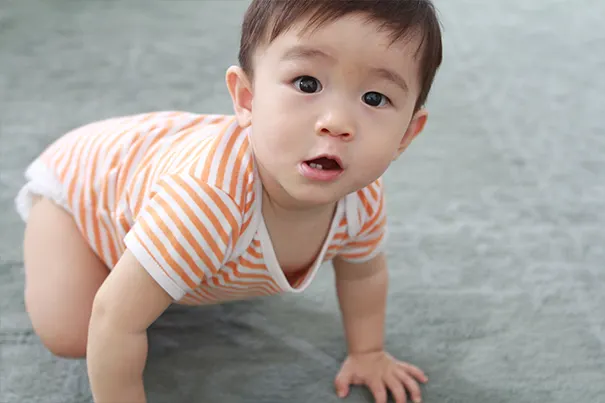A Healthy Routine to Prevent Baby Tooth Decay
Ensuring your baby has a set of healthy teeth can begin even before his first tooth appears.
By wiping his gums with a moist washcloth after feeding, you can ensure that you reduce bacteria that may be lurking.
When to start baby tooth hygiene
It's natural that once you have celebrated the arrival of your baby's first tooth you may start worrying about how to keep his teeth healthy.
His milk teeth will be around until he is about 6 years old and although they are a lot less enduring than adult teeth, they still need looking after — as they act as placeholders for the permanent teeth.
Once your baby's first tooth has appeared, all you need is a wet, soft bristled brush or a soft textured finger cover, moving up to the addition of a rice grain-sized amount and ultimately a pea-sized amount of child-friendly toothpaste by the time he's 3 years old.
What causes baby tooth decay
Baby tooth decay results from leftover sugar clinging to the teeth, which becomes acidic and can break down the enamel. This sugar can come from residual milk, formula, juice or other food left in the mouth after feeding, so the best time to brush is straight after feeding
It's a good idea to give your baby a drink of water before a nap or bedtime after nursing or a bottle as the flow of saliva decreases during sleep — making sugar even more likely to cling to the teeth and cause damage.
Baby tooth decay typically affects the front upper teeth, as they are the first in line when baby drinks from a bottle, which is why baby tooth decay is sometimes referred to as baby bottletooth decay.
How to prevent tooth decay?
Calcium-rich foods make for happy teeth and teaching your baby good habits early on will pay dividends. Giving your baby a snack, such as lightly steamed broccoli or carrots, is a good way to maintain healthy teeth. Keeping sugar at bay will help both your baby's teeth and overall wellbeing, so do try to avoid sweet snacks, particularly before bedtime.
The first signs of tooth decay in babies usually shows as chalky white areas on the teeth, along the gum line. But early treatment can prevent the condition worsening.
From the time your child is 12 months old he should be visiting the dentist twice a year to keep his teeth in top-top condition.

Join Pampers Club and get:




